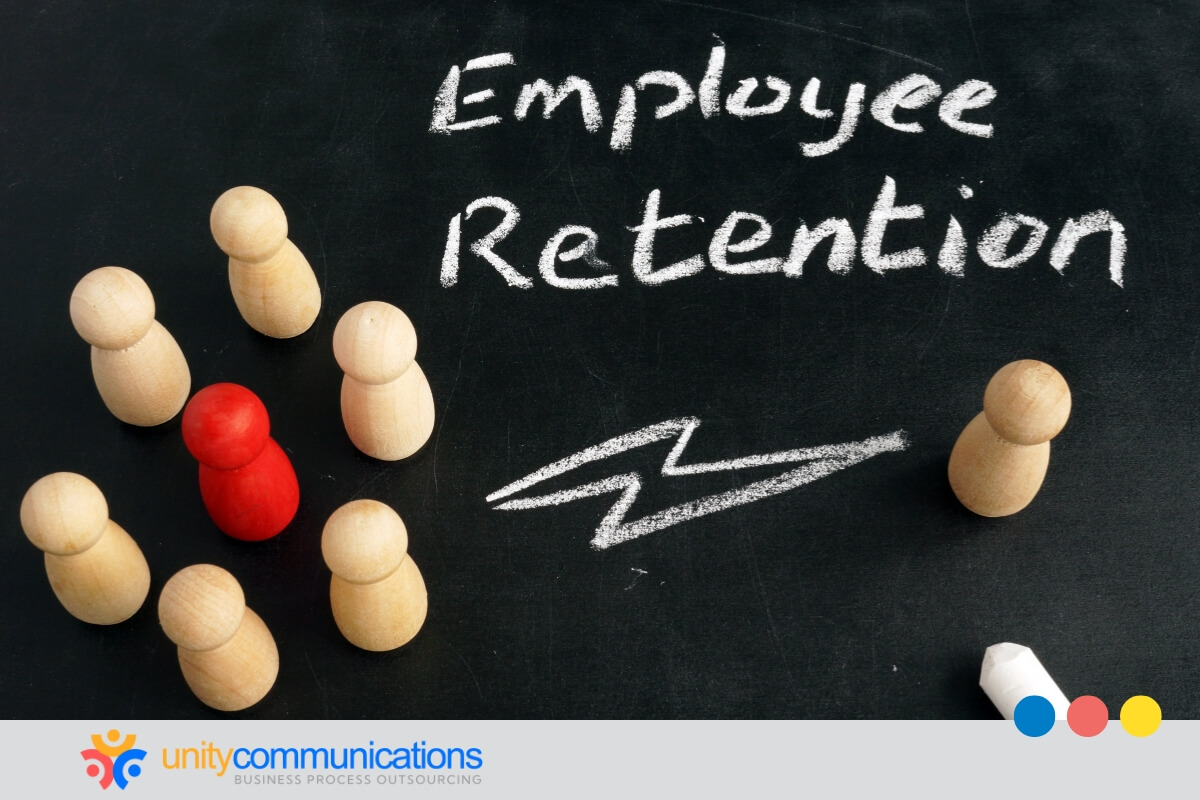Table of Contents
Anticipating and preparing for your future talent needs can be difficult. Data overload, compliance complexities, labor shortages, and adaptability issues are just some hurdles you encounter in the process.
Thus, many companies rely on employer of record (EOR) services to simplify compliance, global talent recruitment, and personnel scaling.
If you want to learn how to leverage employer of record services for strategic workforce planning, this article is for you. It explores the ways third-party providers can help you with this task and the benefits of integrating them into your strategies.
Understanding the role of EORs in talent planning

Strategic workforce planning is vital to building successful global teams. It allows businesses entering the international market to optimize costs, attract and retain top talent, and mitigate risks while aligning their business goals and human resource (HR) strategies.
However, navigating the legalities of international employment is complex and challenging. Thus, many businesses turn to EOR firms for help. To better understand the role of these specialists in workforce planning, it’s best to know first what they do and how they work.
EOR is similar to information technology (IT) support outsourcing, where a third-party provider takes over specific tasks. In this case, the service vendor or business process outsourcing (BPO) partner acts as your company’s legal employer on record, handling every aspect of employment management.
Due to EOR’s services and features, more businesses are considering the strategy. According to Valuates Reports, the global EOR market value reached almost $4.3 billion in 2023 and can grow by 6.8% by 2030.
An EOR’s specialization makes them capable and valuable partners to support your talent-planning initiatives. Here are the different ways the employer of record can help you with strategic workforce planning:
Recruitment strategy planning
EORs have local expertise and knowledge of best practices for recruitment across different countries. They are also familiar with the most effective channels and platforms, including:
- General job boards
- Industry-specific platforms
- Social media groups
- Professional networks
- Government job boards
- University career centers
They use these resources to help you target your sourcing efforts effectively and reach the right talent pool. Providers can also assist in designing and offering competitive benefits packages that comply with local regulations to attract top candidates.
Talent acquisition and management
EOR providers specialize in simplifying HR tasks. They cover everything from initial screening and interview processes to onboarding and payroll administration. This capability helps you proactively build a robust talent pipeline.
Third-party specialists also practice effective workforce management, including developing employee engagement and career development programs. These initiatives let you retain top talent, encourage internal mobility, and further strengthen your labor pool.
Additionally, EORs can assist in identifying and developing high-potential employees for future leadership roles. They can provide these candidates with career development opportunities and training programs for proactive succession planning.
Employment regulatory compliance
Most employers of record have established foreign subsidiaries in the countries where they operate, making them well-versed in various workforce laws and benefits plans. Their expertise and experience allow them to navigate the complexities of international labor laws.
They understand, adhere to, and stay up-to-date with relevant local and industry-specific employment and tax regulations, such as:
- Employment types
- Termination
- Working hours and overtime
- Minimum wage
- Leaves and benefits
- Tax and social security contributions
- Data privacy
Other tasks they cover include registering your company with local authorities and obtaining necessary permits and licenses. Compliance with such regulations in areas you want to hire is critical to strategic workforce planning. It helps avoid legal issues, ensure fair labor practices, and maintain a positive company reputation.
Data analysis and insights
EOR vendors can analyze your existing workforce to identify and anticipate potential changes. They utilize HR information systems (HRIS) and various data analytics tools to collect, store, assess, benchmark, and interpret information about your workforce.
This data helps you identify trends, patterns, areas for improvement, and opportunities, such as:
- Emerging skills
- Talent availability
- Performance patterns
- Engagement patterns
- Potential skill gaps
- Employee turnover
- Career advancement opportunities
- High-performing employees
With this data, you can anticipate changes, proactively address issues, and make more informed decisions about your talent management strategies.
In addition, EORs conduct extensive market research through industry reports, networking, collaboration, and technology monitoring. These tasks update them on global talent trends, skill demands, and regulatory changes.
Employers of record can use these tools and strategies to provide valuable data-driven insight and analysis to support workforce planning strategies.
Employee performance management
EORs can help you manage employee performance based on your collected data and its results. Here are a few ways service providers can help you with employee performance management:
- Developing standardized goal-setting frameworks
- Leveraging local expertise on performance expectations
- Aligning individual and team objectives
- Providing access to performance management systems and tools
- Offering multilingual support
- Creating training and development opportunities
Leveraging vendors’ tools and expertise for employee performance management can help you develop a more engaged and competent workforce and inform your workforce planning strategies.
Benefits of integrating an EOR into your workforce planning strategies

Although EORs can benefit your HR planning strategies, they don’t directly create your plans. They simply help mitigate risks and provide the necessary tools to inform your decisions and execute your strategy effectively.
Nevertheless, they are invaluable partners for translating your workforce plan into a thriving international team.
Below, we discuss the different advantages of leveraging EORs for talent planning.
1. Improved workforce scalability and agility
Adaptability is critical to effective talent planning. It aligns your workforce with your business needs amid fluctuations in technologies, economic shifts, and customer preferences.
EORs simplify hiring and onboarding, reduce your business’s time-to-market, and streamline compliance to let you quickly scale your team. They also expedite termination processes. In addition, employers of record use various engagement models, including, but not limited to, the following:
- Contract-based work
- Project-based work
- Part-time employment
- Temporary-to-permanent models
- Co-employment models
This flexibility and agility allow you to manage understaffing and overstaffing. It also empowers you to develop contingency plans confidently, experiment with your workforce strategy, and adjust your plan based on real-world results.
2. Access to global market insights and talent pools
Employers of record can give insights into global workforce and market trends to inform your plans. They leverage established subsidiaries, a network of partners, and continuous market research.
Some information they can help you access include skills in demand, talent availability, regulatory changes, and technological advancements. This data is critical in strategic workforce planning.
By understanding emerging trends, you can identify the talent you need to succeed in specific markets and adapt your strategies accordingly. This step can also help you anticipate future skill demands, proactively upskill your existing workforce, or source talent with the required skills.
3. Enhanced risk mitigation
Leveraging EORs minimizes compliance risks, giving you a sense of certainty and stability. Knowing that your employment practices adhere to relevant labor and tax laws allows you to confidently develop your workforce planning strategies.
Additionally, compliance with labor and tax laws provides you with accurate data on:
- Employee demographics
- Employee costs
- Benefits
- Tax obligations
- Absenteeism and turnover rates
- Leave and time off frequencies
Knowledge of legal requirements helps inform your workforce planning decisions, such as budgeting, resource allocation, and talent acquisition and management strategies.
For example, as an employer, knowing your legal obligations and finance records enables accurate workforce cost forecasting and planning. This prevents unexpected issues, such as budget overruns and payroll discrepancies, and empowers you to reallocate and optimize resources.
Overall, proactively mitigating compliance risks during workforce planning empowers you to develop sustainable strategies.
4. Improved employee engagement and retention
Through adequate benefits and compensation, effective talent management practices, and compliance, EORs contribute to a more positive work scene. A healthy work environment translates to improved employee motivation and retention, which are some of the principles of workforce planning.
This enhanced engagement creates a more stable and productive workforce, helping you ensure you have the right people with the right skills.
Additionally, employee retention allows you to anticipate training and development needs. It also informs your decisions on future workforce planning strategies, which you can base on the strengths and potential of your existing team.
Best practices for workforce planning with EORs
Employer of record experts simplify workforce planning strategies, but the key to maximizing their features is integrating them seamlessly. This requires clear and open communication, ongoing collaboration with your EOR provider, and efficient utilization of market insights.
Here’s a quick guide to help you with those steps:
- Communicate business goals. Clearly outline your target markets, business goals, and desired workforce structure during the selection process. Once you’ve chosen an EOR partner, develop a customized plan with them. Include hiring strategies, onboarding processes, compliance considerations, and performance management plans.
- Maintain ongoing collaboration. A successful EOR partnership thrives on constant communication and active participation. Schedule regular meetings with your chosen EOR to discuss progress, address challenges, and adjust your plan. Open communication, data sharing, and joint performance reviews are also beneficial.
- Leverage EOR expertise for market insights. Develop your recruitment and talent acquisition strategy using an EOR’s local market knowledge and compliance expertise. Utilize their understanding of different cultures to develop effective onboarding programs and foster cross-cultural collaboration to minimize misunderstandings.
In addition, train your internal HR team on international workforce management to reduce their reliance on EORs, letting providers focus on more complex matters.
Following these recommendations allows you to seamlessly integrate the employer of record into your workforce planning strategies. These steps help you maximize their services to build a sustainable global team aligned with your goals.
The bottom line

EORs possess skills and resources that make them valuable partners for strategic workforce planning. They have local market knowledge, compliance expertise, data analytics, flexibility, scalability, and global networks to help you navigate international employment.
Integrating them into your strategies offers many benefits, providing confidence and peace of mind. These include resource optimization, improved risk mitigation, accelerated talent acquisition, boosted agility, and enhanced employee experience.
Let’s connect if you are looking for an EOR provider for international workforce planning.




